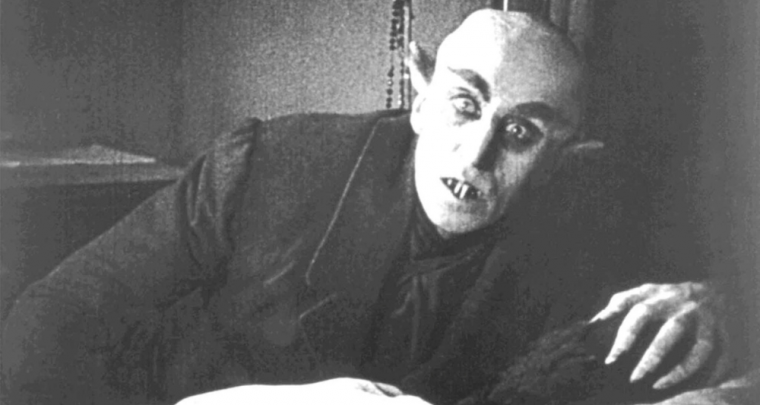
Max Schreck in “Nosferatu" at the Last Picture House -- September 11.
Wednesday, September 11, 6 p.m.
The Last Picture House, 325 East Second Street, Davenport IA
Holding a 97-percent "freshness" rating on Rotten Tomatoes, where the critical consensus calls the 1922 film "one of the silent era's most influential masterpieces" that "set the template for the horror films that followed," F.W. Murnau's Nosferatu serves as the second presentation in the German American Heritage Center's German Expressionist Film Series, its September 11 screening at Davenport venue The Last Picture House treating audiences to the movie ranked 21st in Empire magazine's list of "The 100 Best Films of World Cinema."
Subtitled A Symphony of Horror, Nesferatu is a silent German Expressionist vampire film directed by Murnau and starring Max Schreck as Count Orlok, a vampire who preys on the wife (Greta Schröder) of his estate agent (Gustav von Wangenheim) and brings the plague to their town. Nosferatu was produced by Prana Film and is an unauthorized and unofficial adaptation of Bram Stoker's 1897 novel Dracula. Various names and other details were changed from the novel, including Count Dracula being renamed Count Orlok before finally becoming Nosferatu, an archaic Romanian word with a suggested etymology of Nesuferitu`, meaning "the offensive one" or "the insufferable one". Although those changes are often represented as a defense against copyright infringement, the original German intertitles acknowledged Dracula as the source. Film historian David Kalat states in his commentary track that since the film was "a low-budget film made by Germans for German audiences ... . Setting it in Germany with German-named characters makes the story more tangible and immediate for German-speaking viewers."
His 1922 masterpiece brought Murnau into the public eye, especially when his film Der brennende Acker (The Burning Soil) was released a few days later. The press reported extensively on Nosferatu and its premiere. With the laudatory votes, there was also occasional criticism that the technical perfection and clarity of the images did not fit the horror theme. The Filmkurier stated that the vampire appeared too corporeal and brightly lit to appear genuinely scary, while Hans Wollenberg described the film in photo-Stage No. 11 as a "sensation" and praised Murnau's nature shots as "mood-creating elements." Nosferatu was also the first film to show a vampire dying from exposure to sunlight. Previous vampire novels such as Dracula had shown them being uncomfortable with sunlight, but not undeath-threateningly so. Director Robert Eggers' remake of Murnau's legendary film is set for release this December 25.
Nosferatu will be presented at The Last Picture House at 6 p.m. on September 11, and $15 admission includes a medium popcorn. For more information on the screening and the German American Heritage Center's German Expressionist Film Series, call (563)322-9944 and visit GAHC.org.










